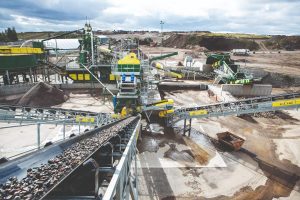Our client, a business that specialises in the processing of all types of aggregates and construction waste, has just recovered a windfall tax rebate from HMRC through a claim for research and development tax relief.
The overall aim of the project was to develop a process which would allow our client to expand its operation and process construction waste to extract recyclable material and produce different resaleable aggregates for use in construction projects.
Our client’s business is located in proximity to a number of urban areas and this is reflected in the nature of the waste it receives. For example, the old brick material is varied in its composition. It was critical to our client that the end-product aggregate offered for resale be consistent in size and quality albeit that it may have been varied in composition prior to processing.

Our client recognised that it was critical that the process be flexible in terms of its screening capabilities and the aggregates it produces. The client was aware that a ‘wet-screening’ machine would be likely capable of achieving its intended aims however it was unable to acquire such a machine. Our client wished to use ‘dry-screening’ machinery to develop its process; in particular a three-belt separator that it had already acquired. The three-belt separator was able to separate material into three categories by width / diameter; over 75mm, 20-75mm and less than 20mm however our client recognised that in order to be able to achieve its aim and screen material into aggregates that are consistent in size and quality, it needed to do more. Our client considered that the process would require material to be separated into up to seven different sizes, with finer tolerances in each banding.
As the number of belts on the separator could not be increased, our client knew that it would require the addition of a pre-filtration system, so that the material lands on the belts in size order however there was substantial technological uncertainty concerning which filtration system to choose and how to combine it with the existing three-belt separator. Our client carried out research and development activity to examine existing filtration systems and determine which were suitable to trial with the separator. Each system was welded to the three-belt separator, and trial runs were carried out to test their effectiveness in terms of the consistency of the filtered material.
Downstream processing was to be provided by a trommel and a shaker-bed. Work was carried out to determine how to integrate a trommel with the three-belt separator into a single system and to make it work from a 110v electric motor, rather than a separator generator. Our client developed its own frame, bearing and motor system to safely and reliably rotate the drum at the required speed. On account of space restrictions and the risk of overheating, it was necessary to trial and test alternative iterations of bearing systems. In addition, on account of the 110-volt electric motor having a lower capacity than a diesel generator, there was repeated testing of the motor and control system before the trommel was able to rotate as required. The space constraints required a smaller frame to support the trommel and our client worked with a metal fabricator to trial alternative frame structures until an effective solution was found.


